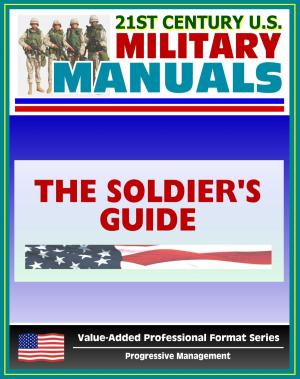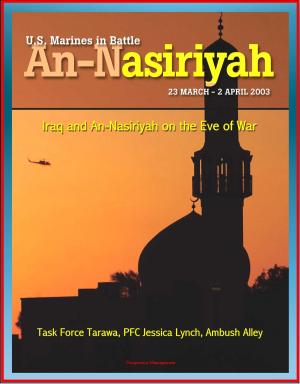Fifth Air Force Light and Medium Bomber Operations During 1942 and 1943: Building Doctrine and Forces that Triumphed in the World War II Battle of the Bismarck Sea and the Wewak Raid, Skip-Bombing
Nonfiction, History, Military, Aviation, World War II| Author: | Progressive Management | ISBN: | 9781370570515 |
| Publisher: | Progressive Management | Publication: | September 23, 2016 |
| Imprint: | Smashwords Edition | Language: | English |
| Author: | Progressive Management |
| ISBN: | 9781370570515 |
| Publisher: | Progressive Management |
| Publication: | September 23, 2016 |
| Imprint: | Smashwords Edition |
| Language: | English |
This important report has been professionally converted for accurate flowing-text e-book format reproduction. When Generals George C. Kenney and Ennis C. Whitehead became the two senior commanders of the US Fifth Air Force in July 1942 their work was cut out for them. The previous January, the Japanese secured the port of Rabaul in eastern New Britain. They immediately began the drive down the east coast of New Guinea with the objective of driving the Allies from Port Moresby. For the next year and a half, in some the harshest climate of World War II, the Fifth Air Force helped to reverse the tide and drive the Japanese from eastern New Guinea. This was accomplished despite the Europe-first policy and an inappropriate doctrine based on high altitude, daylight, precision bombing.
Kenney and Whitehead's first task was to modify existing aircraft and develop a suitable doctrine to interdict Japanese shipping between New Britain and New Guinea. In order to suppress ship-borne antiaircraft artillery, forward-firing machine guns were mounted in the nose of Douglas A-20 light bombers and North American B-25 medium bombers. Low altitude skip-bombing tactics were borrowed from the British and perfected by constant practice and refinement.
By February 1943, Allied intelligence, greatly aided by ULTRA intercepts, predicted the movement of a Japanese convoy destined for New Guinea. Kenney and Whitehead were determined to destroy the convoy with their recently modified commerce destroyer fleet and focused all their energies on doing so. A dress rehearsal featuring the Fifth Air Force light and medium bombers as the main striking force was conducted in the Port Moresby Harbor. On March 3rd after being hit twice by mass, coordinated attacks, the convoy was virtually wiped out in what became known as the Battle of the Bismarck Sea.
That same fleet of light and medium bombers also proved deadly against enemy airfields. Aircraft combat range was extended and modifications were made to the bomb bays to accept parachute fragmentation bombs. Airfield attack profiles were developed and once again, ULTRA provided a suitable target. In preparation for the anticipated Allied ground invasion of the Huon Peninsula, the Japanese moved the 4th Air Army to their four bases near Wewak. Beginning on August 17th, in a carefully- planned attack, Fifth Air Force bombers caught the enemy on the ground. By August 21st, nearly every aircraft at Wewak was destroyed. The subsequent Allied invasion was carried out virtually unopposed from the air.
Fifth Air Force light and medium bomber operations during 1942 and 1943 are textbook examples of doctrinal flexibility and extraordinary innovation. The unprecedented success of both the Battle of the Bismarck Sea and the Wewak Raid illustrate how airpower became the dominant force in the Southwest Pacific.
This important report has been professionally converted for accurate flowing-text e-book format reproduction. When Generals George C. Kenney and Ennis C. Whitehead became the two senior commanders of the US Fifth Air Force in July 1942 their work was cut out for them. The previous January, the Japanese secured the port of Rabaul in eastern New Britain. They immediately began the drive down the east coast of New Guinea with the objective of driving the Allies from Port Moresby. For the next year and a half, in some the harshest climate of World War II, the Fifth Air Force helped to reverse the tide and drive the Japanese from eastern New Guinea. This was accomplished despite the Europe-first policy and an inappropriate doctrine based on high altitude, daylight, precision bombing.
Kenney and Whitehead's first task was to modify existing aircraft and develop a suitable doctrine to interdict Japanese shipping between New Britain and New Guinea. In order to suppress ship-borne antiaircraft artillery, forward-firing machine guns were mounted in the nose of Douglas A-20 light bombers and North American B-25 medium bombers. Low altitude skip-bombing tactics were borrowed from the British and perfected by constant practice and refinement.
By February 1943, Allied intelligence, greatly aided by ULTRA intercepts, predicted the movement of a Japanese convoy destined for New Guinea. Kenney and Whitehead were determined to destroy the convoy with their recently modified commerce destroyer fleet and focused all their energies on doing so. A dress rehearsal featuring the Fifth Air Force light and medium bombers as the main striking force was conducted in the Port Moresby Harbor. On March 3rd after being hit twice by mass, coordinated attacks, the convoy was virtually wiped out in what became known as the Battle of the Bismarck Sea.
That same fleet of light and medium bombers also proved deadly against enemy airfields. Aircraft combat range was extended and modifications were made to the bomb bays to accept parachute fragmentation bombs. Airfield attack profiles were developed and once again, ULTRA provided a suitable target. In preparation for the anticipated Allied ground invasion of the Huon Peninsula, the Japanese moved the 4th Air Army to their four bases near Wewak. Beginning on August 17th, in a carefully- planned attack, Fifth Air Force bombers caught the enemy on the ground. By August 21st, nearly every aircraft at Wewak was destroyed. The subsequent Allied invasion was carried out virtually unopposed from the air.
Fifth Air Force light and medium bomber operations during 1942 and 1943 are textbook examples of doctrinal flexibility and extraordinary innovation. The unprecedented success of both the Battle of the Bismarck Sea and the Wewak Raid illustrate how airpower became the dominant force in the Southwest Pacific.















